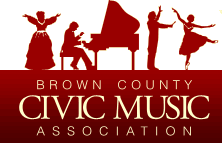Season Listing | Program | Program Notes | Biography
Baroque music revels in the extravagant. The very word “baroque” implies bizarre, irregular and over the top, and the leading musicians of the day were true pioneers, riding the seas of change with wild abandon, ever searching for new musical ideas to titillate the ears and move the souls of the public. Boundaries between high art and street music were yet to be fully established and composers were free to draw inspiration from myriad sources, resulting in a wild and colourful carnival of musical styles.In tonight’s program we have employed a palindromic structure to make a journey through the highways and byways of this fascinating era. Along the way we encounter well known works by the greatest masters of the day – Bach, Handel, Purcell and Vivaldi – alongside strange and fascinating, works from the early days of the Baroque, by composers whose names have not stood the test of time: Castello, Ortiz, Cima and Cazzatti, whose daring stylistic innovations paved the way for the luminaries who followed them.
Most of the works in tonight’s program have been arranged and adapted for the instruments of our ensemble, a procedure which was common throughout the Baroque era; Bach, for instance, adapted the works of Vivaldi and others for solo keyboard, Handel frequently reworked his orchestral material as chamber music, and Vivaldi’s Four Seasons appeared in numerous arrangements (in some 80 different publications) in the century following their composition – including a French transcription for recorder, violin, cello, harpsichord and hurdy-gurdy!The inspiration of folk and dance music is ever present in music of the Baroque – not just in the bucolic revelry of the Four Seasons, but also, for instance, in the music of Bach (hear the rustic Gigue from the suite in A) – a facet which our violinist David Greenberg has taken to its logical conclusion in his amalgamation of Bach with his other love, Cape Breton folk music. We hope the great masters of the past would approve of this kind of juxtaposition — and that through our free and uninhibited approach to their music we are able to bring the Baroque vividly to life!



